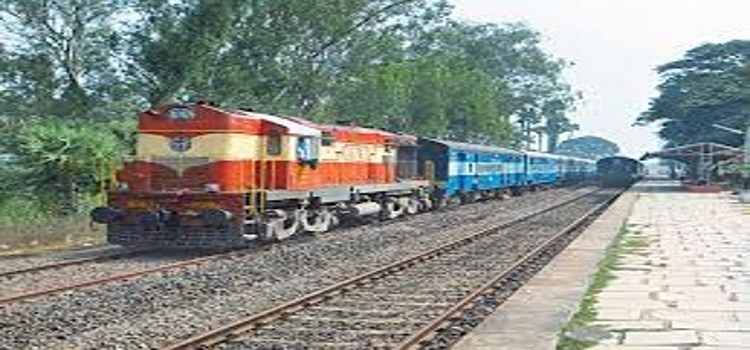
Indian Railways will soon fit devices on tracks that are aimed at preventing derailment and break-down of trains – a step that will go a big way in enhancing passengers safety. These devices are being fitted Maharashtra and other states will get them soon. According to some officials, the Online Monitoring of Rolling Stock (OMRS) will be installed between Central Railway’s Bhusawal and Jalgaon section as well as Wardha and Nagpur sections within a duration of one year, as part of the first phase of the execution. According to the report, the officials also claimed that with the help of this system, faults in wheels and locomotives (engines), while the train is in operating mode, can be detected.
The platform is being developed by Centre for Railway Information Systems (CRIS) – an IT arm of Indian Railways.
Under this system, microphones and sensors that record the noise that coaches and locomotives make on the tracks. The officials also said that the condition of the wheels of the coaches or any technical fault will be displayed in yellow, green and red, which will signify wheels are safe, maintenance is required and wearing out of wheels have began, respectively. According to the report, the system, which was also tested in year 2013 will be used in the coming years. Also, 65 systems will be installed. Moreover, for the first phase of the system installation, Indian Railways has selected 25 routes across the nation, where devices will be installed and for this, the national transporter will spend an amount of Rs 113 crore, the report stated.
In addition to this, Indian Railways will also fit as many as 40 systems across various routes such as between Surat and Mumbai, and Mumbai and Roha, in its second phase of implementation. The report also claimed that the system has been examined between Delhi and Panipat. The system, which consists of one control unit, will be set up in Delhi from where the connectivity will be provided to all other zones of Indian Railways.
According to Arun Arora, Chief Mechanical Engineer in Northern Railways, with the help of OMRS, the system will detect the errors as soon as it will capture the sound of wheels. “The Online Monitoring of Rolling Stock (OMRS) system involves the placing of microphones and sensors in such a way that they record any audible noise or measure forces generated while a wagon, coach or locomotive is in motion. The OMRS equipment is extremely sensitive and accurate and can detect the most minute of abnormal noises emanating from rolling stock (railway term for trains)and will alert the control room immediately,” he said.
“This system allows us is to do away with the current method which involves the physical examination of rolling stock in workshops,” Arora said.
Another official said that it would ensure faster maintenance of coaches and also allow coaches to be monitored using mobile communication facilities.
The Railways has also decided to install equipment called the Centre Buffer Coupling (CBC) to ensure that coaches of a train don’t climb onto each other in case of a derailment, an official said.
The coupling is a piece of equipment that binds coaches of a train into one unit.
Older, conventional coaches made at the Chennai-based Integral Coach Factory have screw coupling which tend to rip apart due to the impact of a derailment, an official explained.
The newer Linke Hoffman Busch (LHB) coaches are fitted with CBC which prevent extensive damage to coaches in case of a derailment.
In addition to this, recently, Piyush Goyal-led Railway Ministry has also decided to redevelop platforms across all Mumbai suburban railway stations in order to enhance safety of railway passengers across Mumbai suburban railways. In 2015, the work of raising 421 platforms across Central and Western Railway suburban sections was started and so far 344 platforms have been raised already. The Railway Ministry has targeted July 2018 in order to complete the overall development.
